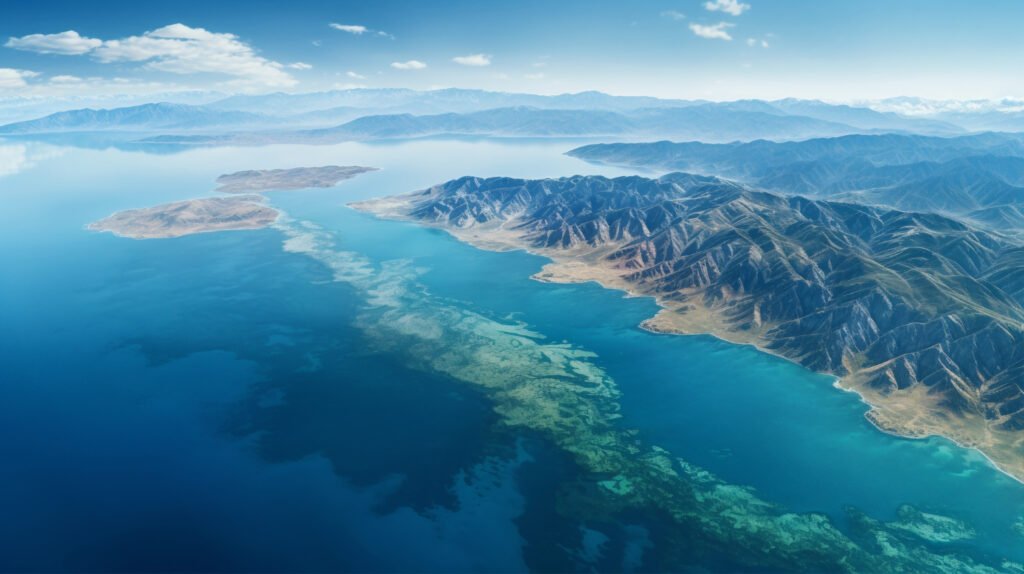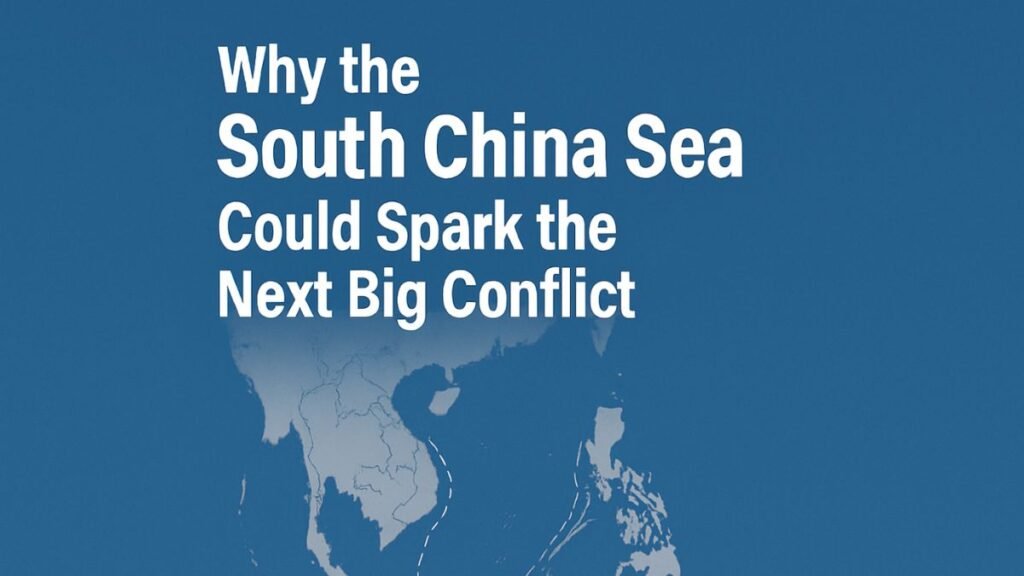The South China Sea lies in the heart of Southeast Asia. A marginal sea of the western Pacific, it is bordered by a cluster of countries—China, Taiwan, Vietnam, the Philippines, Malaysia, Brunei, Indonesia, and Singapore. But despite being surrounded by many, it is a sea increasingly dominated by one.
The South China Sea is more than a body of water—it is the artery of global commerce. Linking the Indian Ocean to the Pacific, it facilitates nearly $3.4 trillion worth of trade every year. Tankers, container ships, fishing vessels, and naval fleets all pass through these waters, making it one of the busiest and most vital shipping lanes in the world.
Beneath its surface lie untapped reserves of oil and natural gas, while its waters offer some of the richest fishing grounds on the planet. These economic and strategic stakes have turned the sea into one of the most contested regions globally.

China’s Expanding Shadow
As the world’s second-largest economy, China sees the South China Sea not just as a trade route—but as a zone of control. The recent US and Philippines military exercise is considered a direct threat to China. There have been numerous incidents of clashes and dangerous maneuvers between Chinese coast guard and maritime militia vessels and Philippine ships, particularly around contested areas like Scarborough Shoal and Second Thomas Shoal.
In recent years, Beijing has undertaken aggressive militarization of the region. It has built artificial islands, equipped with airstrips, radar systems, missile launchers, and military bases, especially around the Spratly and Paracel islands. These man-made outposts, nicknamed the “Great Wall of Sand,” now serve as advanced forward operating bases.
China has deployed advanced H-6 bombers to Woody Island in the Paracel Islands, marking a return of these bombers to the island since 2020, which is seen as a message to rival claimants.
The U.S. and the Freedom of Navigation
According to Reuters, Washington has taken an open stance: the South China Sea must remain free and open. The US constantly asserts the freedom of navigation in the region by praising the upholding of the UN Convention on the Law of the Sea (UNCLOS).
The U.S. maintains a significant military presence in the Indo-Pacific region, including naval and air forces, to deter potential threats and reassure allies. The U.S. strengthens its alliances with countries in the region, such as the Philippines, Japan, and Australia, to enhance their defense capabilities and promote collective security. The US constantly surges to counter Chinese domination over this region.
The Taiwan Factor
At the center of rising tensions lies Taiwan. While not located in the South China Sea itself, Taiwan’s proximity, its democracy, and its geopolitical position make it impossible to ignore.
China views Taiwan as a breakaway province. But Taiwan operates independently, with its own government, military, and constitution. As Chinese military incursions in the Taiwan Strait grow, so do concerns of accidental or intentional conflict.
For the U.S. and its allies, supporting Taiwan is not just about protecting an island—it’s about defending the democratic order in Asia.
The Nine-Dash Line: Drawing Lines, Crossing Boundaries
China’s claim over almost the entire South China Sea rests on a historic map marked by nine dashes. This “nine-dash line” cuts deep into the exclusive economic zones (EEZs) of neighboring nations like Vietnam, Malaysia, and the Philippines.
But in 2016, the Permanent Court of Arbitration in The Hague ruled that China’s expansive claim had “no legal basis” under the UN Convention on the Law of the Sea (UNCLOS).
Beijing simply rejected the verdict, calling it “null and void.”
China’s Gray Zone Tactics
China isn’t always using missiles or fighter jets to exert power. Increasingly, it operates in the gray zone—a strategic space between war and peace.
This includes:
- Deploying maritime militia disguised as fishing vessels
- Using coast guard ships to block or ram foreign boats
- Launching disinformation campaigns
- Constructing infrastructure under the pretext of civilian development
The aim: change the status quo without firing a shot.
Philippine Clashes and Escalating Risks
Tensions are particularly high with the Philippines, where confrontations between Chinese and Filipino ships near contested areas like Scarborough Shoal and Second Thomas Shoal have become more aggressive.
Joint U.S.-Philippines military exercises have raised Beijing’s ire further. The fear is that a single incident—accidental or provoked—could spiral into something far bigger.
The QUAD’s Growing Role
The Quadrilateral Security Dialogue (QUAD)—a strategic forum of India, the United States, Japan, and Australia—has emerged as a key balancing force.
In recent meetings, QUAD leaders have emphasized the need to maintain peace and stability in the region. India’s External Affairs Minister noted,
“On the South China Sea… the issue is to find a solution to the disputes… for us, it’s a very important international waterway. How to ensure that it stays calm and free of conflict is a common priority.”
QUAD doesn’t position itself as a military alliance, but its presence complicates China’s monopoly in the Indo-Pacific.
Is Conflict Inevitable?
There is no full-scale war yet. Diplomacy still happens. Summits are held. But the temperature is rising, and no side seems willing to back down.
The real danger may lie in an unplanned confrontation—an aircraft misidentification, a skirmish at sea, a nationalist overreaction. With nuclear powers involved, the risk is no longer theoretical. The world is watching, and asking: How long before the South China Sea boils over?
Read More: South Asia in Focus: As Pakistan Takes UNSC Helm, India Watches China Closely
Watch India Pakistan Breaking News on The Ink Post. Get Latest Updates, Latest News on Movies, Breaking News On India, World, Explainers.
Follow us on Facebook and Instagram and LinkedIn and Twitter to Stay updated!




